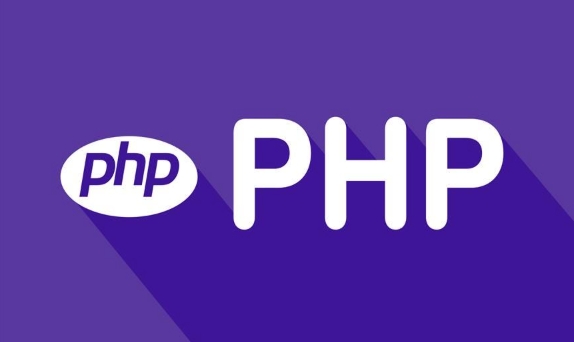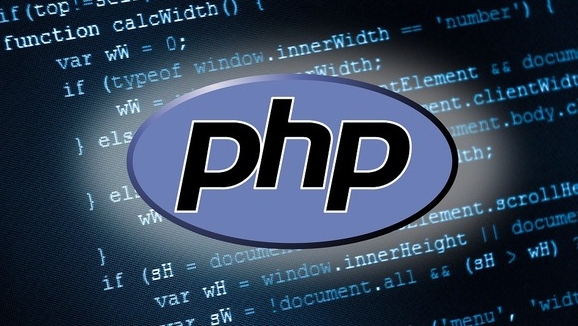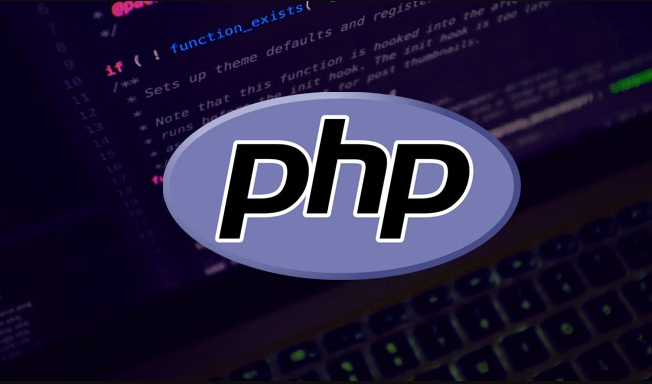There are three main ways to create callback functions in PHP, namely, using normal functions, anonymous functions and class methods. A callback function is a function passed as a parameter to another function, and is often used in scenarios such as array processing, event-driven programming, and asynchronous processing. 1. When using ordinary functions, you need to pass the function name as a string, such as 'multiply_by_two'; 2. Using anonymous functions (Closure) can make the code more concise and suitable for one-time use; 3. When using class methods, the static method is passed through [ 'ClassName', 'method' ], and the instance method is passed through objects. It is recommended to choose the appropriate method according to the logical complexity and pay attention to access permissions and code maintainability.

Creating a callback function in PHP is not complicated, the key is to understand its usage scenarios and syntax forms. Callback functions are functions that are passed as parameters to another function. They are very useful when they need to process data dynamically or perform operations. For example, functions such as array_map and array_filter often use callbacks.

What is a callback function?
Simply put, a callback function is a function that is passed into another function as a parameter. It will not be executed immediately, but will be "called back" at some point inside the main function.

For example: tell someone, "When I finish doing this, you go and buy me a cup of coffee." The "buy a cup of coffee" here is a callback action.
PHP supports multiple ways to define callback functions:

- Normal function name (string)
- Anonymous Function (Closure)
- Methods of the class (static or instance methods)
How to define and use callback functions?
1. Use normal functions as callbacks
You can define a function first and then pass its name as a string to another function.
function multiply_by_two($n) {
return $n * 2;
}
$numbers = [1, 2, 3, 4];
$result = array_map('multiply_by_two', $numbers); Here array_map receives the function name 'multiply_by_two' as a callback and processes each element in the array.
Note: The function name must be wrapped in single quotes, otherwise PHP will try to execute the function instead of passing it in as a parameter.
2. Use anonymous function (Closure) as callback
This is the most common practice in modern PHP programming, especially suitable for one-time functions.
$numbers = [1, 2, 3, 4];
$result = array_map(function($n) {
return $n * 2;
}, $numbers);This method is simpler and does not require the function name to be defined separately, which is suitable for situations with simple logic.
3. Use class methods as callbacks
If you encapsulate the callback in a class, you can also write it like this:
class Math {
public static function square($n) {
return $n * $n;
}
}
$numbers = [1, 2, 3, 4];
$result = array_map([ 'Math', 'square' ], $numbers);If it is an instance method, you only need to pass in the object:
$math = new Math(); $result = array_map([$math, 'square'], $numbers);
In which scenarios are callback functions commonly used?
- Array processing : such as
array_map,array_filter,usort, etc. - Event-driven programming : For example, register a hook to execute a callback when a specific event is triggered.
- Asynchronous processing : Although PHP itself is not an asynchronous language, the callback mechanism is also simulated in some frameworks.
Several practical suggestions
- Try to use anonymous functions to simplify the code structure.
- If the callback logic is more complicated, it is recommended to write it as a normal function separately to improve readability and reusability.
- Pay attention to access permissions when using class methods and make sure that the method is
public. - Callbacks can be used in nesting, but do not over-nested to avoid the code being difficult to maintain.
Basically that's it. Although the callback function looks a bit advanced, it is quite easy to use as long as you master the basic writing method.
The above is the detailed content of How to create a callback function in PHP?. For more information, please follow other related articles on the PHP Chinese website!

Hot AI Tools

Undress AI Tool
Undress images for free

Undresser.AI Undress
AI-powered app for creating realistic nude photos

AI Clothes Remover
Online AI tool for removing clothes from photos.

Clothoff.io
AI clothes remover

Video Face Swap
Swap faces in any video effortlessly with our completely free AI face swap tool!

Hot Article

Hot Tools

Notepad++7.3.1
Easy-to-use and free code editor

SublimeText3 Chinese version
Chinese version, very easy to use

Zend Studio 13.0.1
Powerful PHP integrated development environment

Dreamweaver CS6
Visual web development tools

SublimeText3 Mac version
God-level code editing software (SublimeText3)

Hot Topics
 What is PHP, and why is it used for web development?
Jun 23, 2025 am 12:55 AM
What is PHP, and why is it used for web development?
Jun 23, 2025 am 12:55 AM
PHPbecamepopularforwebdevelopmentduetoitseaseoflearning,seamlessintegrationwithHTML,widespreadhostingsupport,andalargeecosystemincludingframeworkslikeLaravelandCMSplatformslikeWordPress.Itexcelsinhandlingformsubmissions,managingusersessions,interacti
 How do I stay up-to-date with the latest PHP developments and best practices?
Jun 23, 2025 am 12:56 AM
How do I stay up-to-date with the latest PHP developments and best practices?
Jun 23, 2025 am 12:56 AM
TostaycurrentwithPHPdevelopmentsandbestpractices,followkeynewssourceslikePHP.netandPHPWeekly,engagewithcommunitiesonforumsandconferences,keeptoolingupdatedandgraduallyadoptnewfeatures,andreadorcontributetoopensourceprojects.First,followreliablesource
 How to set PHP time zone?
Jun 25, 2025 am 01:00 AM
How to set PHP time zone?
Jun 25, 2025 am 01:00 AM
TosettherighttimezoneinPHP,usedate_default_timezone_set()functionatthestartofyourscriptwithavalididentifiersuchas'America/New_York'.1.Usedate_default_timezone_set()beforeanydate/timefunctions.2.Alternatively,configurethephp.inifilebysettingdate.timez
 How do I validate user input in PHP to ensure it meets certain criteria?
Jun 22, 2025 am 01:00 AM
How do I validate user input in PHP to ensure it meets certain criteria?
Jun 22, 2025 am 01:00 AM
TovalidateuserinputinPHP,usebuilt-invalidationfunctionslikefilter_var()andfilter_input(),applyregularexpressionsforcustomformatssuchasusernamesorphonenumbers,checkdatatypesfornumericvalueslikeageorprice,setlengthlimitsandtrimwhitespacetopreventlayout
 What is data serialization in PHP (serialize(), unserialize())?
Jun 22, 2025 am 01:03 AM
What is data serialization in PHP (serialize(), unserialize())?
Jun 22, 2025 am 01:03 AM
ThePhpfunctionSerialize () andunserialize () AreusedtoconvertcomplexdaTastructdestoresintostoraSandaBackagain.1.Serialize () c OnvertsdatalikecarraysorobjectsraystringcontainingTypeandstructureinformation.2.unserialize () Reconstruct theoriginalatataprom
 How do I embed PHP code in an HTML file?
Jun 22, 2025 am 01:00 AM
How do I embed PHP code in an HTML file?
Jun 22, 2025 am 01:00 AM
You can embed PHP code into HTML files, but make sure that the file has an extension of .php so that the server can parse it correctly. Use standard tags to wrap PHP code, insert dynamic content anywhere in HTML. In addition, you can switch PHP and HTML multiple times in the same file to realize dynamic functions such as conditional rendering. Be sure to pay attention to the server configuration and syntax correctness to avoid problems caused by short labels, quotation mark errors or omitted end labels.
 What are the best practices for writing clean and maintainable PHP code?
Jun 24, 2025 am 12:53 AM
What are the best practices for writing clean and maintainable PHP code?
Jun 24, 2025 am 12:53 AM
The key to writing clean and easy-to-maintain PHP code lies in clear naming, following standards, reasonable structure, making good use of comments and testability. 1. Use clear variables, functions and class names, such as $userData and calculateTotalPrice(); 2. Follow the PSR-12 standard unified code style; 3. Split the code structure according to responsibilities, and organize it using MVC or Laravel-style catalogs; 4. Avoid noodles-style code and split the logic into small functions with a single responsibility; 5. Add comments at key points and write interface documents to clarify parameters, return values ??and exceptions; 6. Improve testability, adopt dependency injection, reduce global state and static methods. These practices improve code quality, collaboration efficiency and post-maintenance ease.
 How do I execute SQL queries using PHP?
Jun 24, 2025 am 12:54 AM
How do I execute SQL queries using PHP?
Jun 24, 2025 am 12:54 AM
Yes,youcanrunSQLqueriesusingPHP,andtheprocessinvolveschoosingadatabaseextension,connectingtothedatabase,executingqueriessafely,andclosingconnectionswhendone.Todothis,firstchoosebetweenMySQLiorPDO,withPDObeingmoreflexibleduetosupportingmultipledatabas






